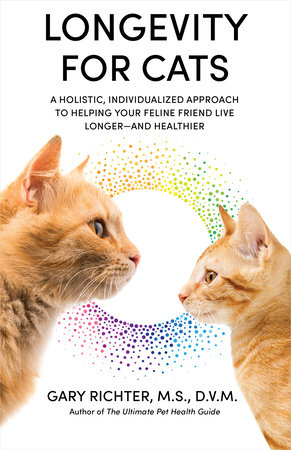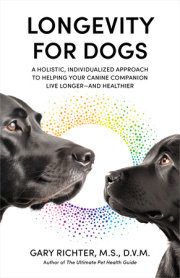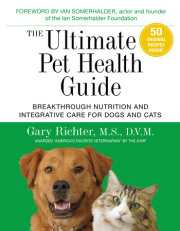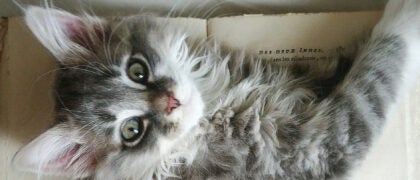INTRODUCTION
Our cats should live forever—or at least as long as we do. This sentiment is shared by pretty much every cat parent who comes into my office. The reality, of course, is cat ownership (or guardianship, if you prefer) is filled with years of loving and unforgettable experiences that end with devastating loss.
The death of a beloved kitty is a life-altering event. For many, the loss of a feline family member can be more impactful than the loss of a human family member. After all, we don’t receive unconditional love from the humans in our life, and for those of us who aren’t perfect (all of us), having a companion who forgives and forgets is a gift beyond measure. In my 25 years of practicing veterinary medicine, I have held hands with, hugged, and counseled scores of cat owners, with discussions about smooth transitions, quality of life, and how allowing our family member to have a peaceful and painless landing is the last, best favor we can do for them.
It’s all true. Euthanasia as a last treatment option is both incredibly difficult and a wonderful gift. Anyone who has ever seen a family member (human or animal) in pain at the end of life will understand that transitioning before things get really bad is a blessing. But what if there was a way to help our pets live longer and healthier lives and delay those sad, final days by a few—or even many—years? What if there was a way to postpone that day indefinitely?
Longevity science for humans is a rapidly growing field of study that has attracted some of the best and brightest scientific minds. My first real exposure to longevity as an achievable goal began in 2020 with two specific events. The first was a trip to Dallas, where I met Dr. Jeffrey Gladden, an interventional cardiologist by training who has now turned his sights on improving the longevity and performance of his patients. Sitting down with Dr. Gladden and discussing what we know about longevity and how we can affect the multiple pathways in the body that impact aging brought into focus that longevity is now much more than a general concept. I realized that through diagnostic testing, diet, and the use of supplements—and sometimes pharmaceuticals and medical treatments—we can slow and frequently even reverse the ticking clock in our bodies.
The second revelation occurred with an unexpected phone call. My good friend Richard Rossi is the creator of an event called the Congress of Future Medical Leaders, which brings together thousands of high-achieving high-school students who have professional aspirations in medicine. Top doctors, scientists, and even Nobel Prize winners regularly present at this meeting. I have been blessed with being a speaker and have had the opportunity to shine a light on both veterinary medicine and holistic/integrative medicine for these future medical professionals. Richard’s skill at creating and hosting an event is the best I have ever seen. When he called in 2020 to tell me he was assembling a small group of people to have in-depth discussions about longevity science, well, let’s just say he “had me at hello.”
As I write this, there have since been four meetings of the group, called DaVinci 50, and it has been an eye-opening experience. The group, capped at 50 participants, allows for up-close and personal discussions with the speakers and the other brilliant minds in the room. Some of the world’s greatest scientists in longevity research—including David Sinclair, George Church, Aubrey de Grey, Greg Fahy, and more—have presented. The research has been, to say the least, cutting-edge, and I’ll cover a lot of it in this book.
By the end of 2020, I was turning my own sights toward longevity medicine for pets. I’ve been practicing integrative medicine for decades, utilizing both conventional allopathic medicine and acupuncture, herbs, chiropractic hyperbaric oxygen, ozone, and other more holistic methods. I took my first steps down the pathway of integrative medicine because I didn’t like telling pet owners that we had exhausted all treatment options and their only choice was to discuss end-of-life planning. The truth is that there are many beneficial alternative therapies—those outside of medication and surgery—that can be advantageous to our pets. As I learned about and implemented more ways to help my patients, I found that cats were living longer and better lives than they “should” have, based on what is expected from allopathic medicine alone. During these years practicing integrative medicine, I focused primarily on maintaining quality of life. Increasing quantity of life was an added bonus, but it wasn’t until meeting Dr. Gladden and attending DaVinci 50 that I began to look at longevity as an achievable primary goal. Medical science has progressed to the point where we now understand many of the metabolic pathways in the body that affect aging, and through new diagnostic tests, we can gather actionable information to slow the aging process.
My goal in writing this book is to provide you, as your cat’s companion and caregiver, with an accessible and actionable guide you can use to help your cat live a longer—and healthier—life. By necessity, we are going to discuss some science, but no Ph.D. or medical degree will be required to successfully read and, hopefully, enjoy this book. We will explore both currently accessible options and the cutting-edge science that will become available for humans and pets in the near future.
We are at an inflection point in science and medicine where the end of life may no longer be inevitable or, at the very least, will be delayed significantly. That may seem like an outrageous claim, but I encourage you to read on! Science is right on the brink of solving aging, and while the vast majority of this research has been focused on people, you and I both know that the lives of our cats are at least as important as our own silly human lives.
I hope you find this book as informative and enjoyable to read as it has been for me to write. Most important, may the information you find within these pages help you to help your cat(s) live their longest, healthiest life!
Copyright © 2023 by Gary Richter, M.S., D.V.M.. All rights reserved. No part of this excerpt may be reproduced or reprinted without permission in writing from the publisher.









